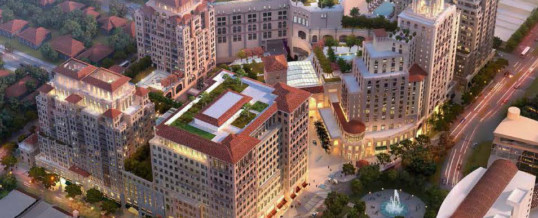
Coral Gables (city of Miami-Dade), known for its affluence and Mediterranean look, will be getting a new look. This summer, after three years of intensive review and revision, Coral Gables commissioners approved the biggest single development. The tallest and largest in the city’s 90-year history — the Mediterranean Village at Ponce Circle, comprising more than one million square feet of hotel, condos and shopping layered into 6.7 acres of long-vacant land three blocks south of the Mile on Ponce de Leon Boulevard.
And that’s just one development project. There are other 16 projects of substantial size in the development pipeline, ranging from an outpost of the budget-friendly, youth-oriented Aloft Hotel chain now under construction on Le Jeune Road to a proposed 16-story residential tower, 33 Alhambra, that would occupy most of a city block behind Coral Gables Elementary School, which is on the National Register of Historic Places.
In addition to tall buildings, developers have filed applications for more than half a dozen infill residential projects, mostly rowhouses and small apartment buildings, that would replace modest and sometimes rundown duplexes and apartments west of downtown.
For a city of 50,000, this is a dramatic new look — particularly if you consider that they have seen just 13 major new developments since 1999. What’s driving this wave of development? Call it the Miami and urban lifestyle effect. Miami’s real-estate boom and a pent-up appetite among Millennials and empty-nesters for urban-style living in the suburbs are spilling over into Coral Gables. Developers are drawn to the central Gables, with its urban grid layout, a burgeoning dining and cultural scene, stable governance and a well-to-do population.
SEP
2015


